6 gooseberry growing mistakes to avoid for lush, plentiful berries
Dodge these gooseberry growing mistakes and enjoy nutrient-rich berry harvests with this delicious, unassuming superfruit
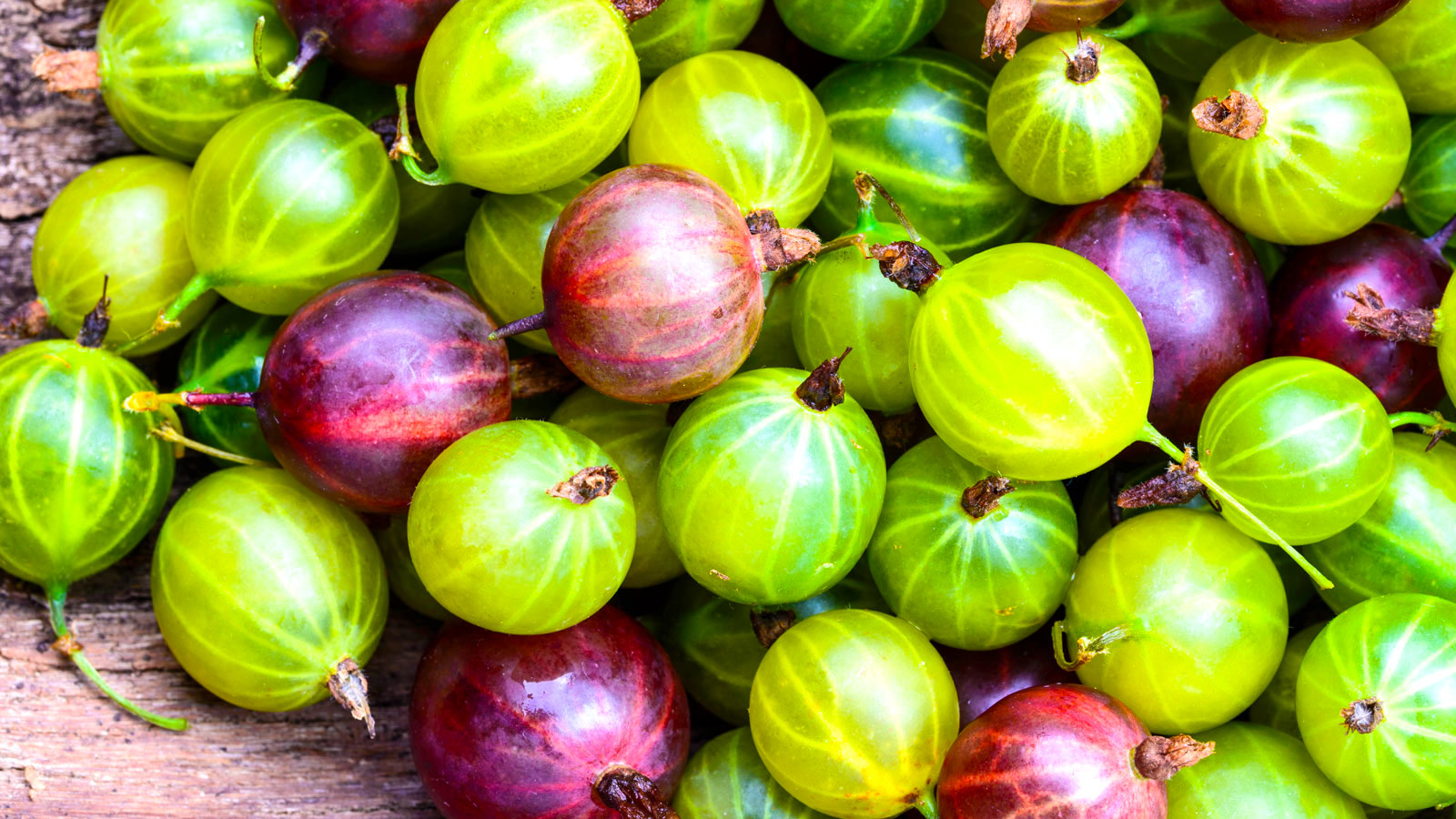

Gooseberry growing mistakes are deeply frustrating, especially considering so many members of the Rubus family (like raspberries and blackberries) are easy to look after. Generous croppers with huge capacity for sustenance and longevity, you’ll find that knowing how to grow gooseberries holds little fear when compared with other fruiting trees and shrubs.
That said, one of the main advantages in growing gooseberries is also a reason growers struggle – and that's variety. With breeds for eating (dessert) and cooking (culinary), and those better suited to American and European growing, the right selection can make all the difference to how well your plants grow.
There are other issues that can cause complications and increase the chances of making mistakes. Whereas other cropping plants thrive by being grown a specific way, these versatile fruiters can be grown as free-standing shrubs, standards and trained climbers. Mistakes made with planting, cultivation, pruning and pest control all make the difference between success and failure.
It's vital to note here that growing gooseberries was illegal in the US until 1966, because it was a host for white pine blister rust, which had a negative impact on the logging industry. ‘Gooseberries are still illegal in all or parts of Maine, Massachusetts, Michigan, Ohio, West Virginia and New Hampshire, says Derek Carter, founder of the Food Forest Nursery. 'However, most of these states let people grow disease-resistant varieties by obtaining a permit.’ Check the situation with your variety, so you avoid one of the most reckless gooseberry growing mistakes of all.
Here, our experts reveal the pitfalls to avoid for healthy, high-yielding harvests of the best gooseberries (Rubus uva-crispa and R. hirtellum). Learn from their mistakes, and grow an abundance of juicy fruit that will keep you stocked in pies, jams, tarts and other delights for years to come.
6 gooseberry growing mistakes to avoid for perfect fruits
Gooseberries are amongst the best fast growing shrubs you can try for edible fruits, but before you start, give some thought to the habits and preferences of individual varieties you might like. As we have explained, certain breeds are better as free-standing shrubs (‘Langley Gage’ or ‘Pixwell’), whereas others prefer training as espaliers, cordons, fan-shapes or climbers, such as ‘Lady Late’.
Capable of producing yellow, pink, green, red and purple fruits, the best gooseberries also vary in their resistance to disease (‘Hinnonmaki’ and ‘Jeanne’) and hardiness (‘Captivator’ and ‘Invicta’). So pick the right variety for your kitchen garden ideas if you can.
Design expertise in your inbox – from inspiring decorating ideas and beautiful celebrity homes to practical gardening advice and shopping round-ups.
- You can find gooseberry plants at Burpee
- Alternative varieties of gooseberry plants can be found at Etsy
- Or you could shop for gooseberry plants at Nature Hills
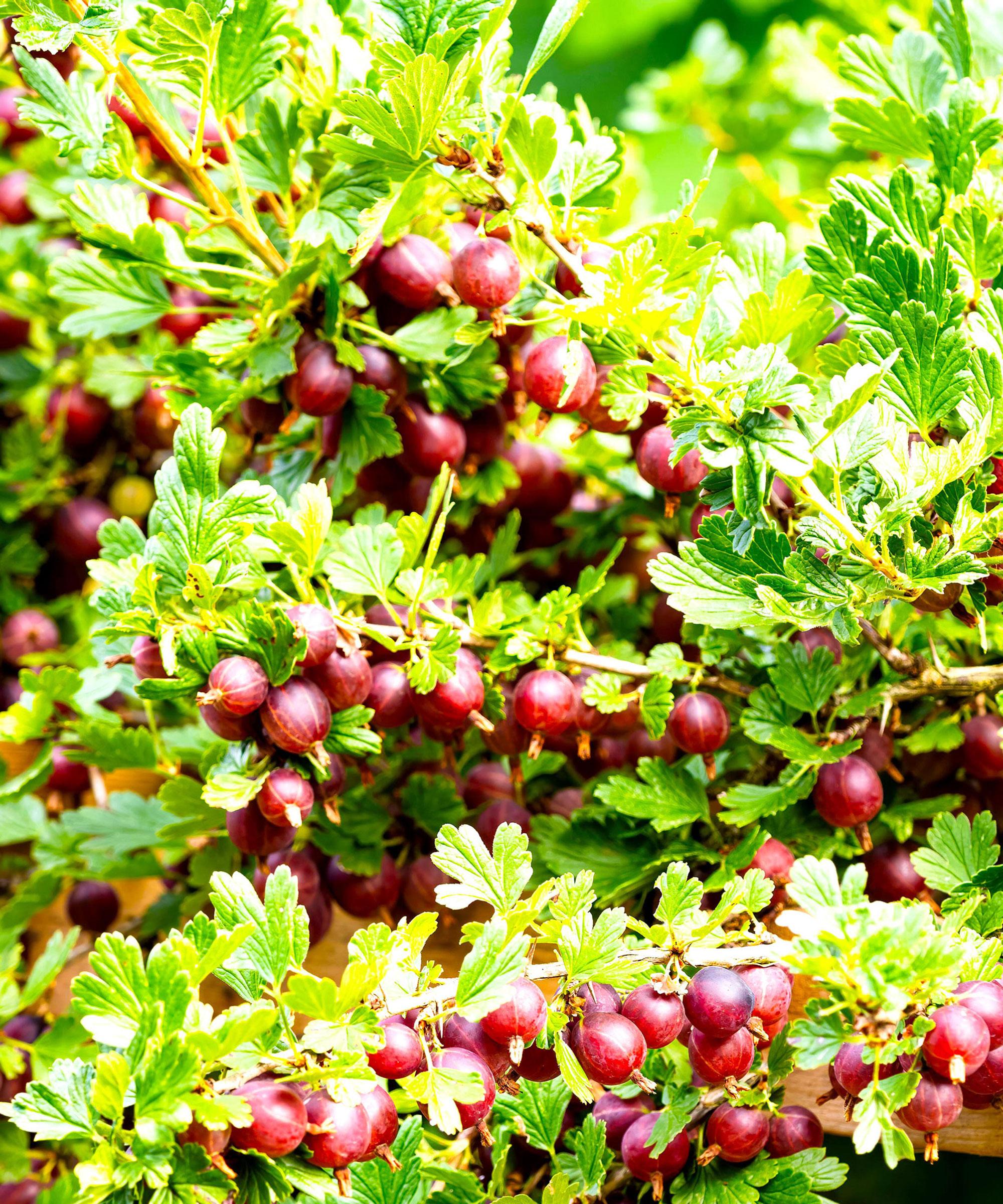
Gooseberries can be easily grown as shrubs or trained up walls or trellises, as long as you adhere to some simple guidelines
1. Planting gooseberries in the wrong conditions
One of the biggest gooseberry growing mistakes involves misjudging the planting site or growing conditions. Often growers fail to accurately gauge environmental factors such as hardiness zone, soil quality, access to sunlight, and the ways in which regional variations can influence how varieties respond. The basics of where and how to plant shrubs include selecting a moist, well-draining site and making sure it has the correct pH.
‘Gooseberries like soil a little more acidic, around 6-6.5,’ says landscape designer Ward Dilmore, co-founder of Petrus. ‘Incorporate organic matter such as compost to improve soil fertility and drainage.’ A failure to do this can lead to weakened or waterlogged root systems and stunted growth.
While gooseberries can cope with a range of soil types, they develop their best fruits with at least six hours of sunshine a day. That said, these are cold-hardy shrubs and not necessarily going to thrive in extended heat.
‘Gooseberries prefer full sun but tolerate partial shade, especially in hot climates,’ says Ward. Depending on variety, they prefer hardiness zones of USDA 4-6, although they can thrive as low as USDA 3 and as high as USDA 8. Unlike other fruiting trees, they don’t mind a little exposure to frost – in fact, a little cold will trigger fruiting the following year.
The time of planting is also critical, says Derek Carter. ‘Plant bare-root plants in fall or early spring before they break dormancy,’ he says. If planting container-based shrubs you have a little more flexibility but, again, avoid extremes of temperature and sites that are parched or frozen. ‘If soil is heavy, amend it with a little sand,’ says Derek. Conversely, if the earth is too sandy, add aged compost or organic matter. Derek also advises soaking roots before planting for optimum hydration, and making the planting hole twice the diameter of the roots. ‘Also, plant 2-3in below ground level to encourage bushy growth,’ he adds.

Ward Dilmore is a landscape designer and founder of Petrus Landscape in the Bay Area of San Francisco. With an unconventional blend of horticulture expertise and international relations background, Ward brings innovation and sustainable creativity to his designs. His commitment to merging beauty with eco-conscious practices help to carve a path of bold, fresh perspectives in the world of landscaping.

Derek discovered permaculture in his early twenties while working as a mechanical engineer. Due to its combination of design and sustainable food production, he became hooked. He received his Permaculture Design Certificate from Oregon State University, quit his job in Houston and started a homestead in Arkansas. He developed Food Forest Nursery from scratch, shipping out a few dozen orders, and now deals with thousands of customers annually. Next year, he plans to found a non-profit with the goal of installing food forests at every US school.
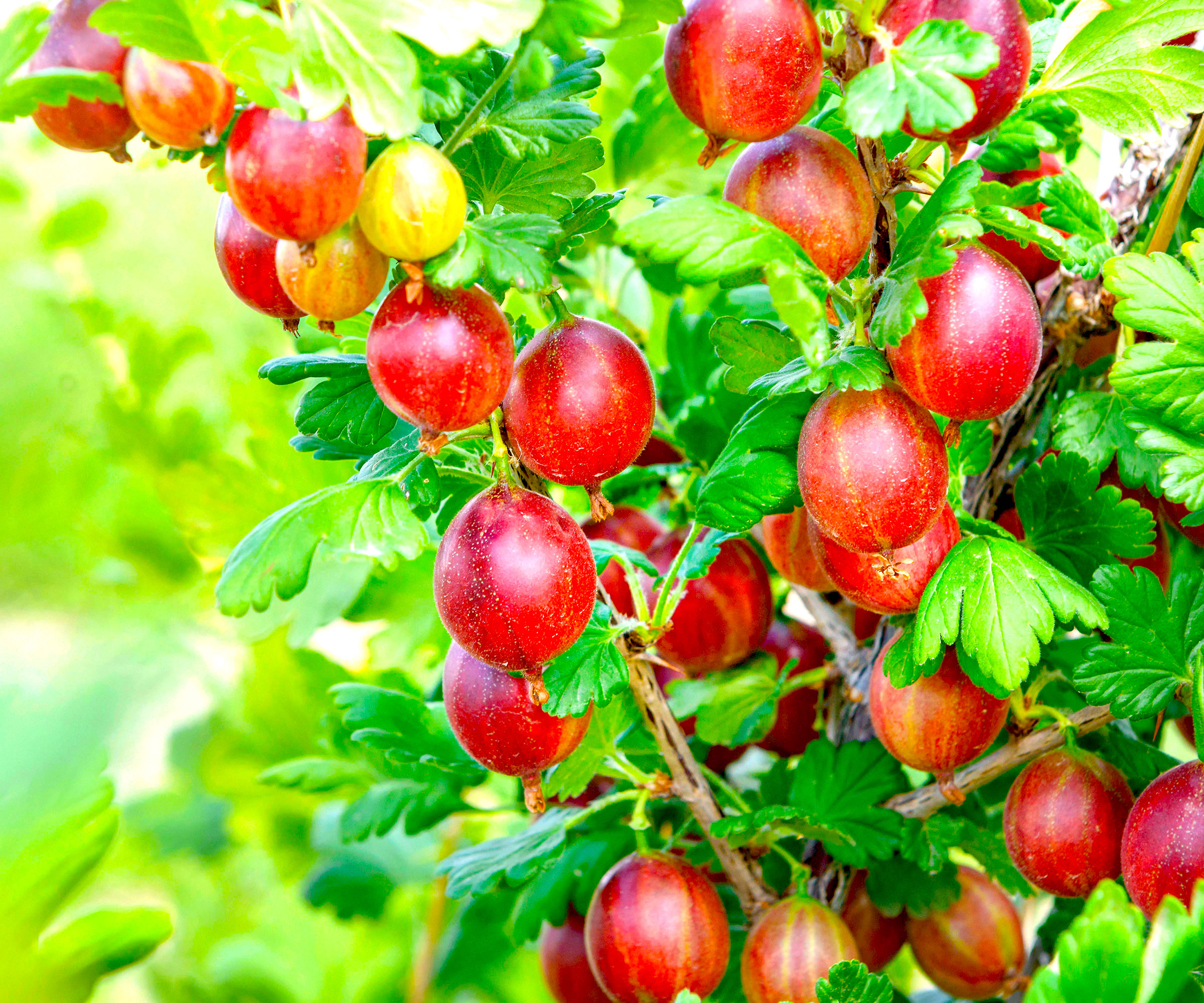
Plant gooseberries where they will receive plenty of sunshine with the option of afternoon shade
2. Misjudging gooseberry spacing and neglecting airflow
Growing gooseberries that are big, juicy and healthy is often about making room for their potential. One of the most common mistakes growers make is to cram in a few extra plants, hoping for more fruits – or to leave every single developing fruit in place, imagining that this will translate into baskets of bountiful harvests.
What is more likely is that plants will falter and fruits will fail. Crowded gooseberries don’t grow bigger – instead, they tend to remain small and stunted. Meanwhile, crowded plants cultivate unwelcome guests in the form of plant diseases, fungal infections and rots. So if you haven’t made airflow a priority, do so now – or repent later.
‘The best gooseberries thrive with good air circulation,’ says Ward Dilmore. ‘Space the bushes three or four feet apart in rows, with 6-8ft between rows.’ Derek Carter agrees that individual gooseberry plants need ample spacing around them (between 3-5ft) for good airflow. He also recommends removing old or damaged canes, as well as cutting back to 10-12in at the time of planting. It’s best to remove any suckers.
Don’t forget support, which will help improve airflow further (and ensure the plants don’t flop or break). Depending on variety, this can be a sturdy stake or bamboo cane, plus a wall, fence, trellis or horizontal wires for the best climbing plants, cordons, espaliers or fans. Later, once plants are fruiting, make sure you thin out fruitlets to one every 3in on the stem so remaining berries develop full and strong.
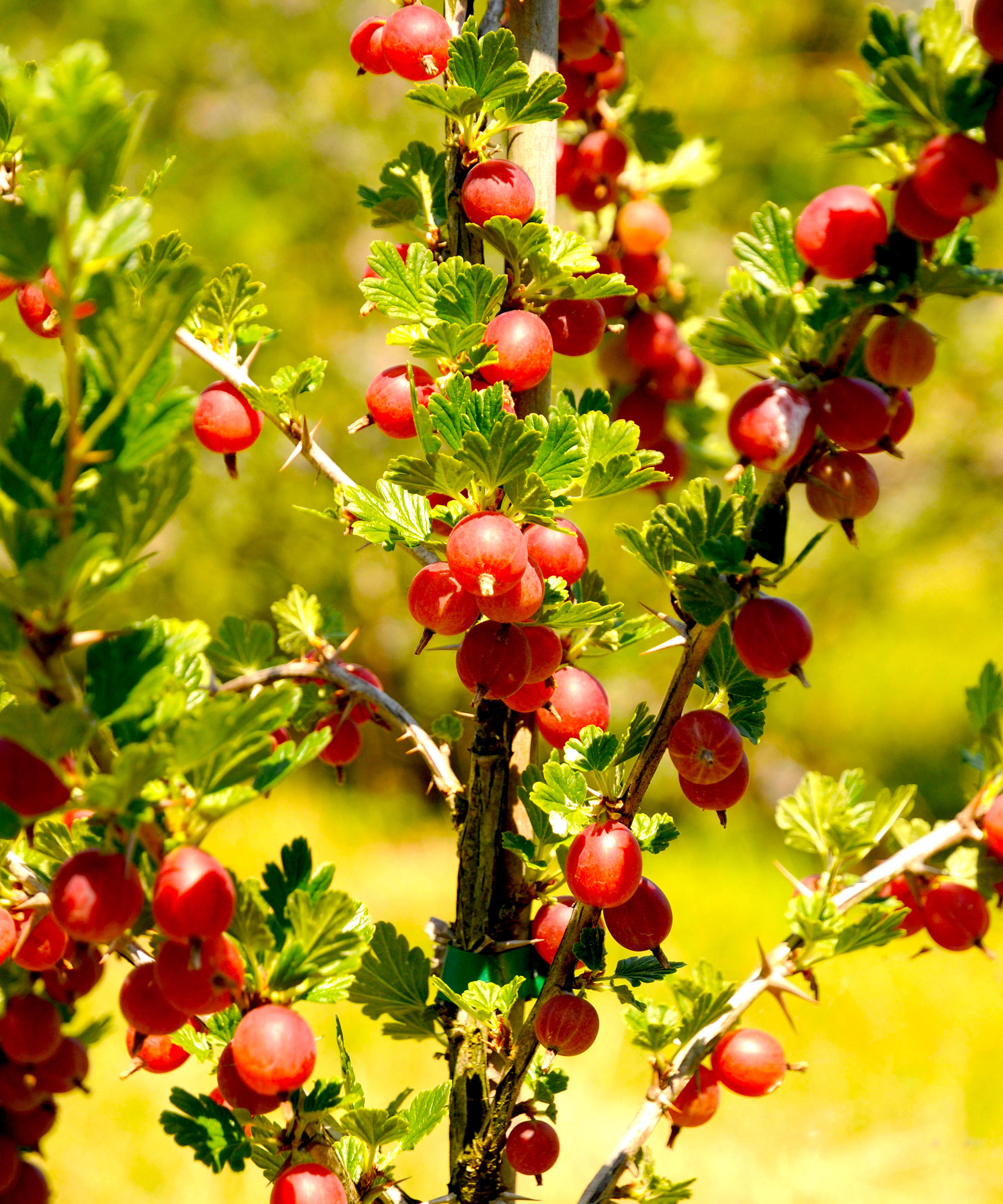
Gooseberries need plenty of space both between plants and in the way they are grown to ensure the healthiest, tastiest fruits
3. Not watering or feeding gooseberries properly
Perhaps the easiest of the gooseberry growing mistakes to avoid is the one made most often – and that is not watering properly. If you have checked soil quality (and your variety is well suited to the region and hardiness zone), sensible hydration is your fast-track to developing healthy roots and luscious fruits. But knowing when to water plants is about reading environmental cues as well as following a schedule.
Gooseberries need plenty of water to reach their juiciest levels – but they also hate cold, soggy soil. So make sure that any watering is in sync with the weather, the earth and the season. ‘Keep the soil consistently moist, especially during the growing season,’ says Ward Dilmore. ‘Water deeply and regularly, but avoid waterlogged soil, as gooseberries are susceptible to root rot.’
How you water also helps reduce infections, says Derek Carter. ‘Reduce the risk by watering the base of the plant rather than overhead.’ A soaker hose or drip irrigation can ensure you go deep and control application. Maintain a watchful eye on hydration for at least one growing season, especially when flowers and fruits develop. In subsequent years, you only need to water during dry spells. An annual mulching of aged compost will help.
‘Apply a layer around the base to conserve moisture, suppress weeds and regulate soil temperature,’ says Ward. ‘Mulch can also add a bit of acidity, which gooseberries appreciate.’ And add a balanced feed in early spring, says Ward. ‘But avoid using high-nitrogen fertilizers, as they can promote excessive foliage growth at the expense of fruit production.’
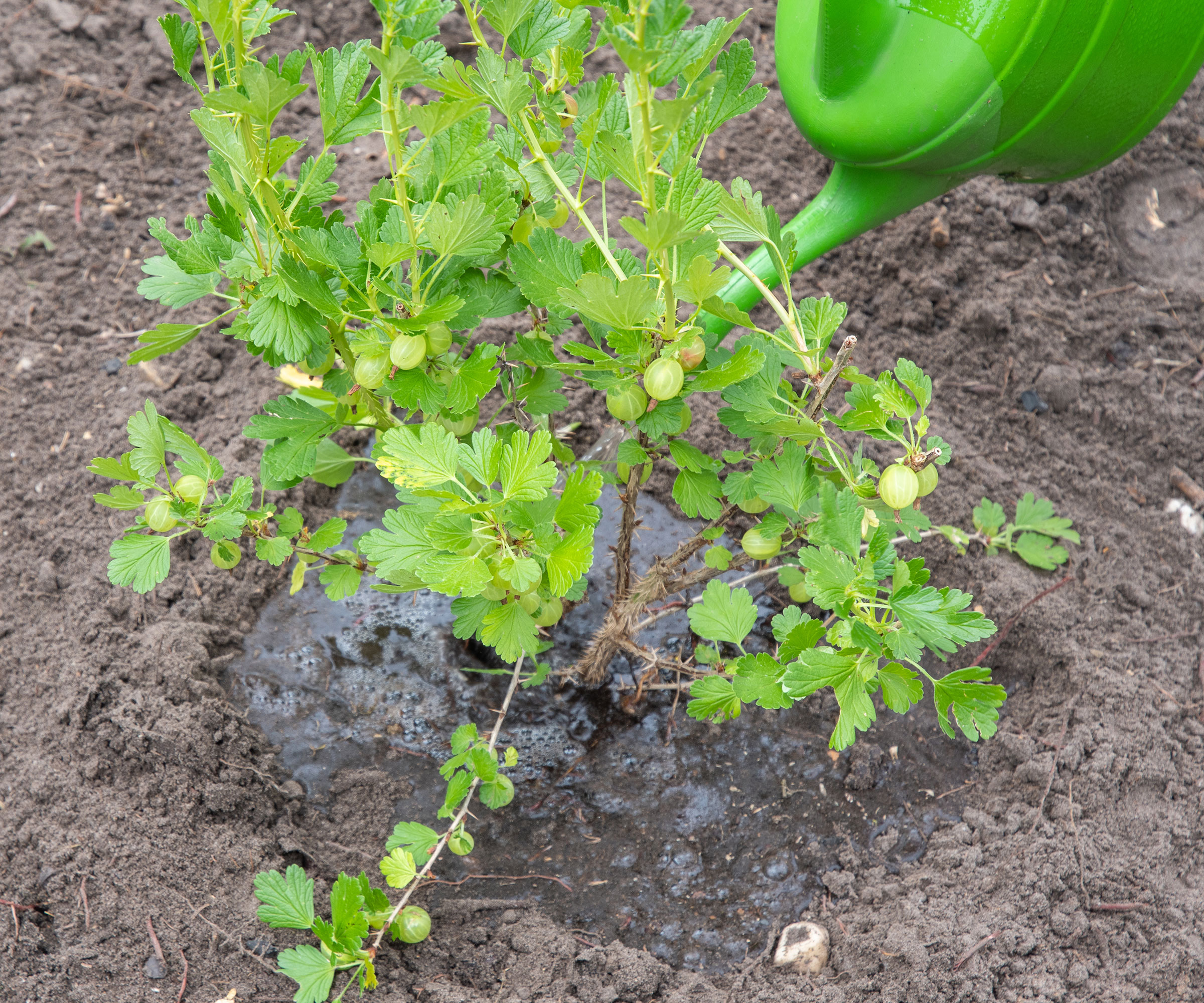
Keep gooseberry plants well watered for the juiciest crops
4. Neglecting to prune gooseberries properly
While it may feel counter-intuitive, cutting back growth at critical points in the year is your best chance for boosting future fruit sets and ensuring that your shrub flourishes for as long as possible. One of the most foolish gooseberry growing mistakes you can make involves inadequate pruning, whether that is cutting the wrong way, cutting at the wrong time – or opting not to cut at all. Some of these pruning mistakes can be remedied, but the worst thing you can do is be too cautious. Whether you’re growing gooseberries as shrubs, standards, fans, cordons or espaliers, pruning is essential for shape and productivity, says Ward Dilmore. ‘Prune dead, diseased, or overcrowded branches in late winter or early spring.’
Follow the one-third pruning rule when pruning, focus on old branches and cramped growth, and aim to leave 11-12 canes. It’s critical to do this before the growing season – otherwise, you risk weakening the branches or exposing them to infection. ‘To encourage fruiting, thin out some older branches,’ says Ward. ‘Then aim for an open, vase-like shape to allow for better air circulation.’ Base cuts on the idea that two- or three-year-old canes are the most productive, says Derek Carter. ‘Prune four-year-old canes in winter and pick the best one-year-old canes to replace them.’
While one annual gooseberry pruning should suffice, you can give a second trimming to side-shoots in June, reducing new growth to five or six leaves. Knowing how to prune is mainly about working with existing support and training to retain the best shape, vigor and health.
Homes & Gardens fruit expert Lucy Chamberlain also recommends taking a few hardwood cuttings of healthy new growth to propagate new gooseberry plants. ‘Cut lengths at least 8in long, remove soft tip growth and insert into free-draining earth,’ says Lucy. ‘They’ll root in spring and can be planted elsewhere in the fall.’ Finally, don’t forget to wear protective gloves. And don’t worry about cutting too much; these shrubs are resilient and will come back stronger.
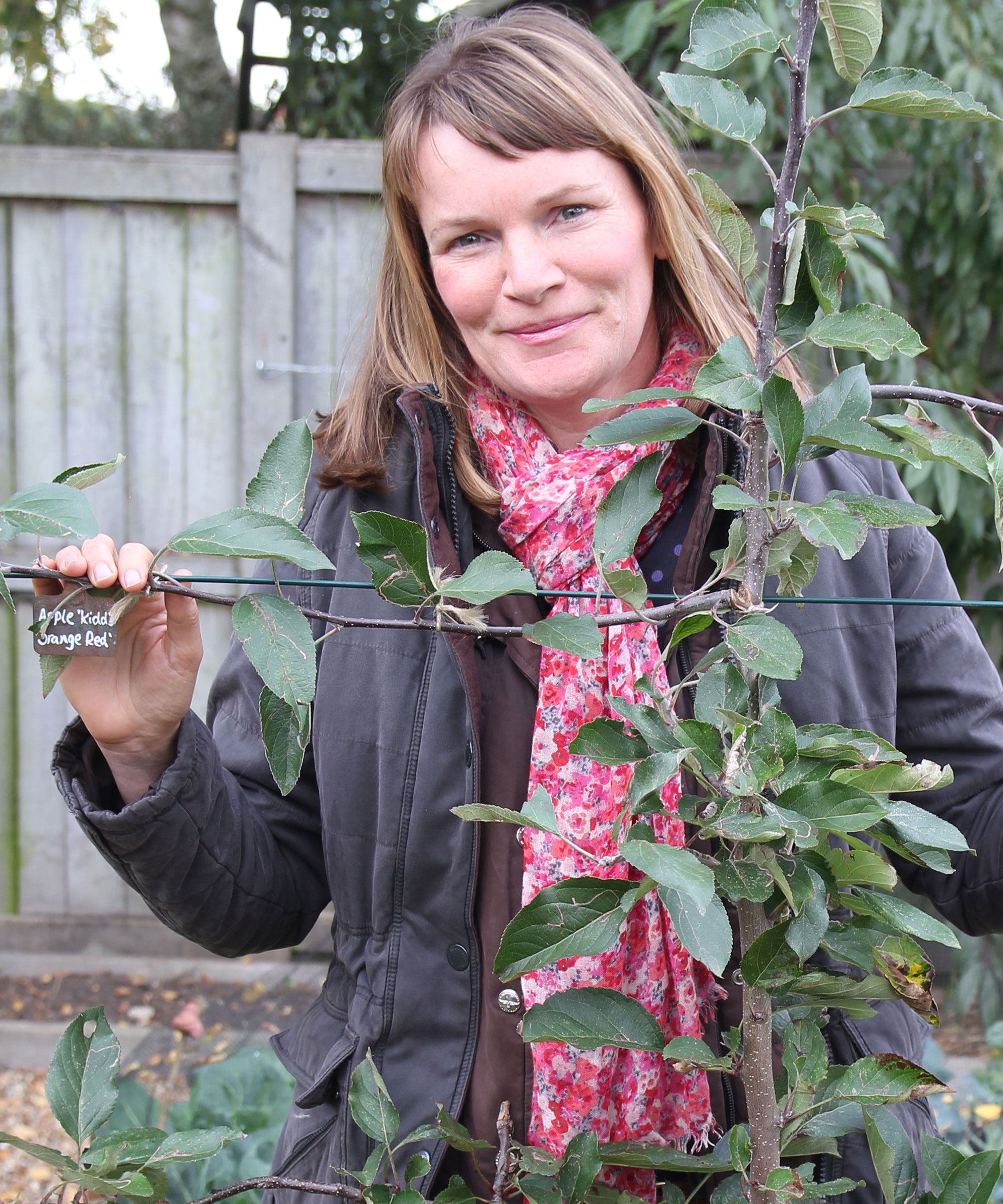
Lucy was a Horticultural Advisor at RHS Wisley and has been Head Gardener on a 100-acre estate in England for many years, but writes regularly for titles such as The Garden, Gardeners’ World, The Guardian and Amateur Gardening. She’s also the author of RHS Step by Step Veg Patch, available on Amazon, which covers 50 types of fruit and veg.
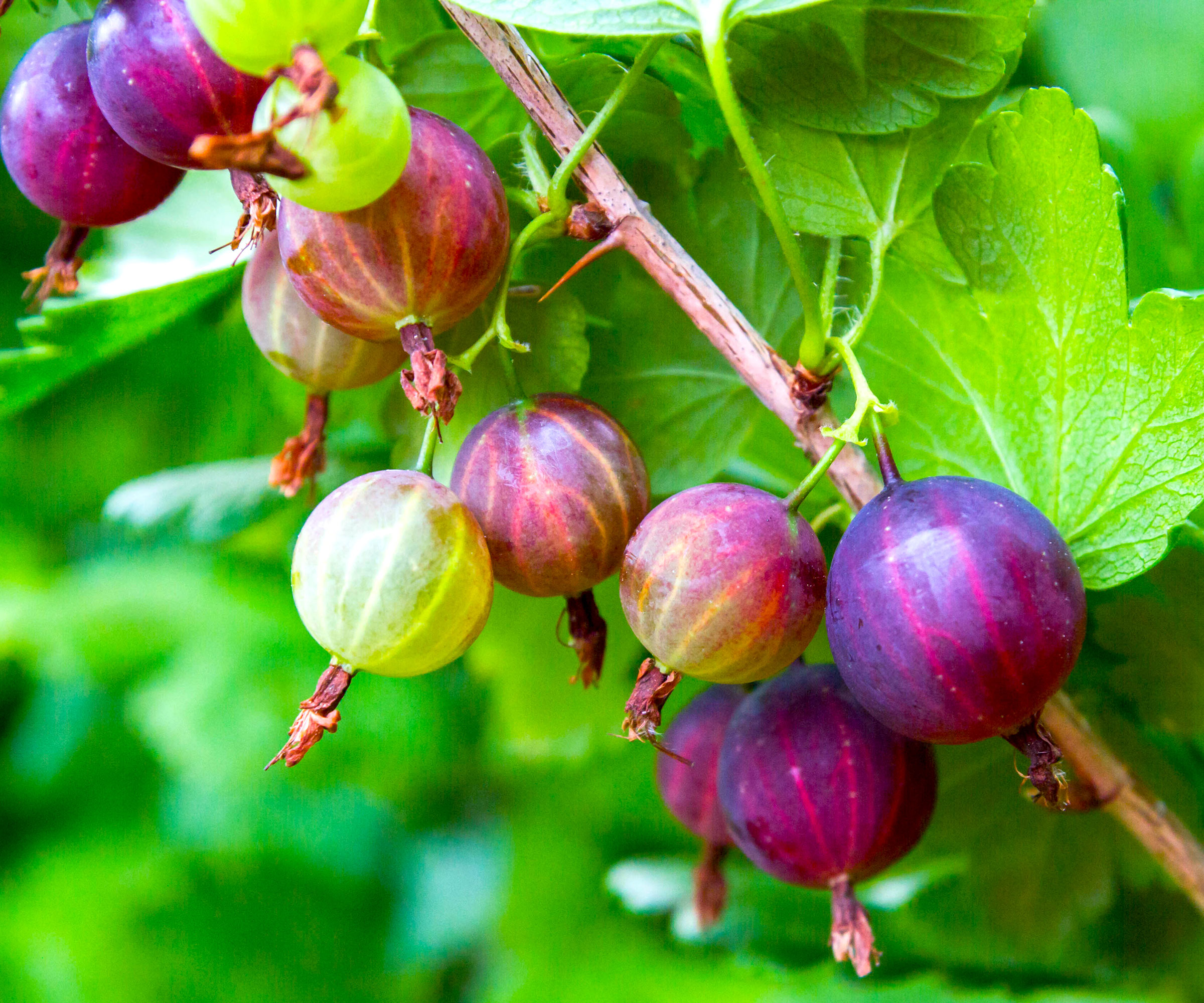
Pruning gooseberries annually ensures the highest yields over the longest lifeline
5. Ignoring signs of gooseberry pests and diseases
Growers new to gooseberries may think their hardiness makes them less prone to disease. While varieties like ‘Hinnonmaki’, ‘Pixwell’, ‘Captivator’ and ‘Jeanne’, available at Food Forest Nursery have moderate resistance to some diseases, it isn’t a good idea to assume your variety will fight off all pests and infections. Nor is it wise to ignore warning signs. Daily checks are critical in the first season of growth, so you can respond swiftly.
‘Common diseases are powdery mildew (white powder on leaves) and anthracnose or leaf spot (dark leaf spots),’ says Derek Carter. Both stunt growth and harvests if left unchecked. You’ll get rid of powdery mildew if you apply organic sprays and remove any affected foliage. To prevent it, hydrate regularly, protect from drought and opt for varieties like ‘Jeanne’ with a stronger resistance to powdery mildew and white pine blister rust.
‘You must also keep an eye out for pests like aphids, sawflies and currant worms,’ says Ward. Maintaining good airflow can prevent these. If you see the telltale signs of aphids (like honeydew and leaf distortion), act quickly.
‘Treat infestations promptly – neem oil is a great organic spray,’ says Ward. You can also get rid of aphids with blasts of water or predators such as ladybugs or lacewings. The best way to control numbers of gooseberry sawfly eggs or caterpillars is to squash them. Do this quickly, as they can destroy a plant’s foliage inside a week. Meanwhile, pruning can help with currant worms. One final pest to watch out for are birds. Once fruits develop, be sure to safely net bushes using a cage or a taut frame.
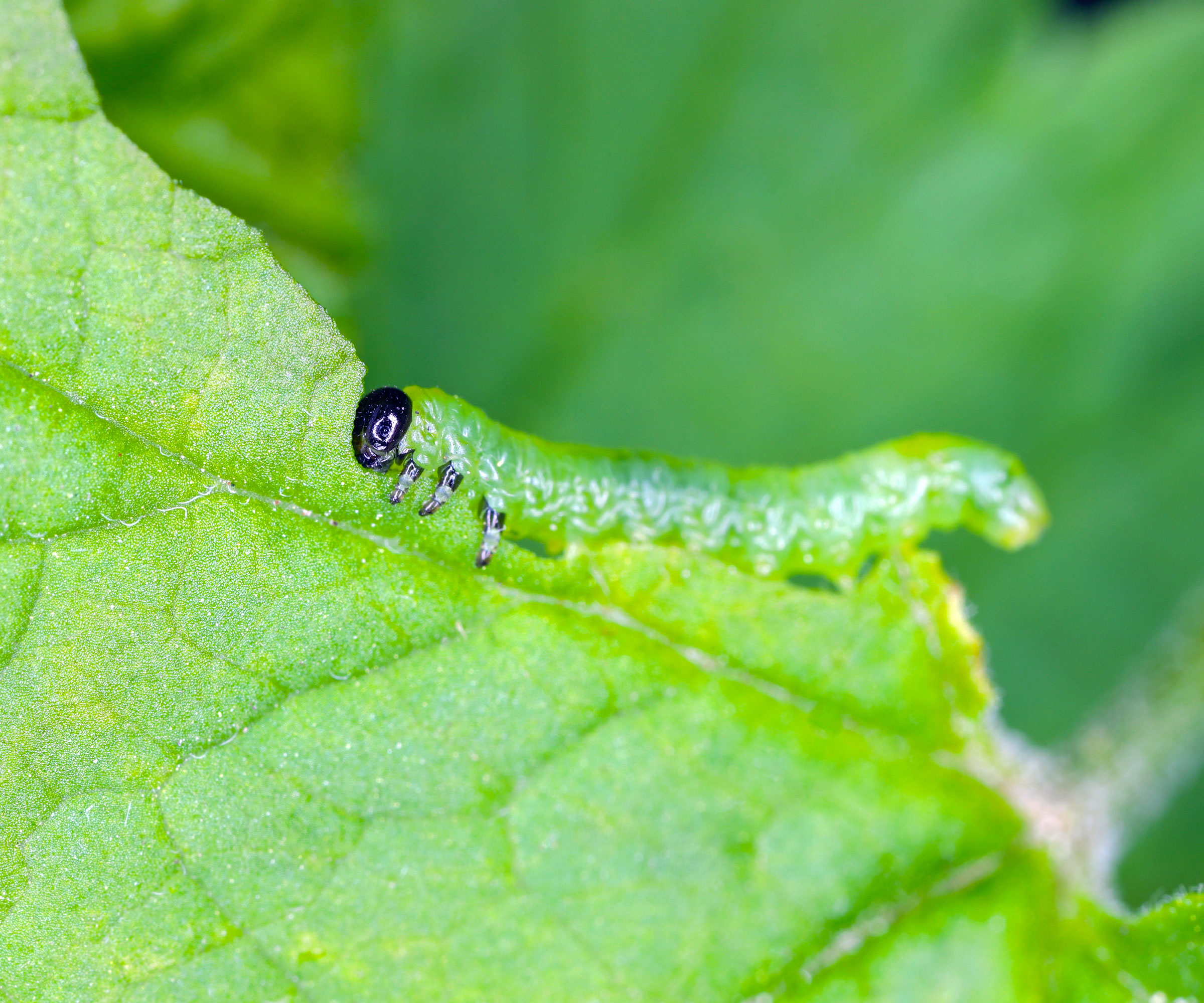
Gooseberries are susceptible to pests like sawfly as well as infections like powdery mildew
6. Harvesting gooseberries at the wrong time
With other fruiting shrubs and trees, it can be tempting to harvest too soon, only to be disappointed by pithy, bitter or underdeveloped fruits. Anyone who has ever tried foraging for berries or cultivating the best brambles will know that timing is everything if you are after the juiciest fruits.
Misjudged harvesting is one of the most frustrating gooseberry growing mistakes – but usually the issue is leaving too many in situ for too long. As we’ve explained, thinning is an essential part of the process if you want fruits to have the best chance. Take the chance to maximize yield, by making two distinct gooseberry harvests a month apart.
Depending on variety, fruit sets start to ripen in June and culminate in late July and August. Make your first pickings while fruits are firm and tart – these will be great for sauces and preserves. Removing a few from each cluster means those that remain can ripen to their fullest for harvesting a few weeks later. ‘The best gooseberries are ready when they are firm, plump and have a translucent appearance,’ says Ward.
The trick is to remove those final fruits when they are bulging but not too squishy. Pressing the skin of a gooseberry, it should yield slightly to pressure. Changing color can also help you identify the peak of flavor with certain breeds. Red varieties such as Hinnonmaki, available at Food Forest Nursery, deepen from crimson to deep magenta as they ripen. But in many cases, it’s down to how they feel.
Use protective gloves to remove fruits, unless you have grown a thornless variety. It’s also wise to remove any dried flowers still attached to ripe fruits. Eat fresh or refrigerate for a week. You can also preserve gluts by freezing or pickling them.
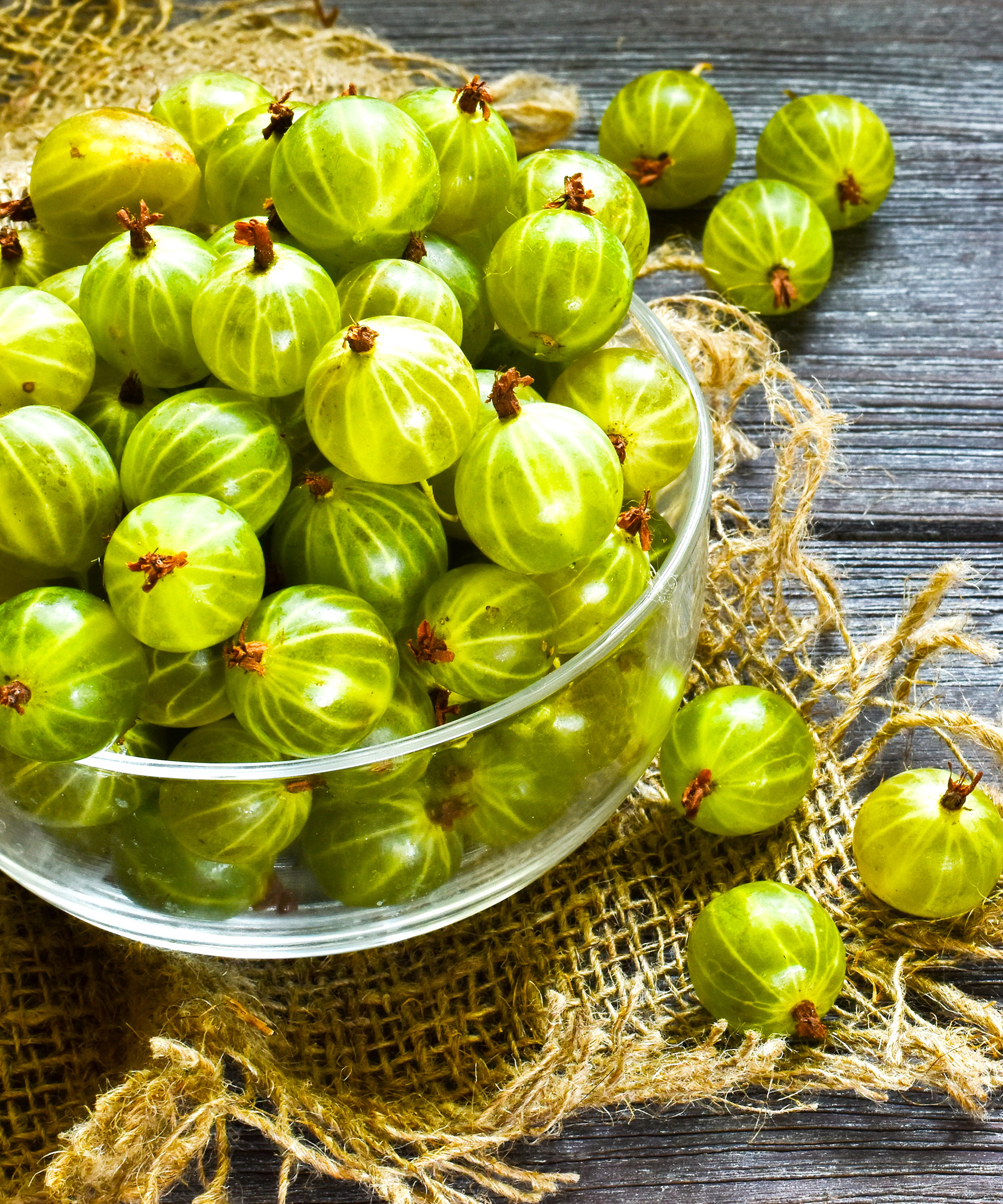
Harvest gooseberries when firm, plump and translucent
FAQs
Why is my gooseberry shrub not producing fruits?
If you’re growing gooseberries that aren’t producing fruits, there are a few possible explanations. Usually, if fruiting shrubs fail to fruit then a lack of pollination is to blame. Many gooseberries are self-fertile, so you should be able to develop a good fruit set even if you only grow one gooseberry plant. Modern varieties like Pixwell, available from Food Forest Nursery, are ideal for solo planting. If you are already growing a garden for pollinators, pollination should not be a problem – as long as the pollinating insects are around at the same time as the flowers and have easy access. You might need to pollinate manually with a brush if pollinators are not present.
Poor planting or soil health, insufficient watering or feeding, poor exposure to sunshine or inadequate pruning are all potentially to blame for a lack of crops. Any of these could be factors where you see flowers but they don’t develop into fruits. However, the main thing to bear in mind is that plants are usually only likely to fruit after two-three years of growth.
If you have had problems growing a particular gooseberry variety in your region, you may have more luck using a container. Select a deep pot (ideally 18in) with adequate draining holes. Late fall is a good time to plant for container gardening, but make sure your gooseberry will be supported with a cane if it needs training.
Dodge the obvious gooseberry growing mistakes by maintaining a regular watering regime and add a little fish blood and bone in the growing season. A light mulch will also help maintain the right moisture levels. Gooseberries are happy in cool weather, but protect from frosts by covering with horticultural fleece or moving indoors to a cool greenhouse.

A former assistant editor of Amateur Gardening magazine, Janey's gardening passion was fostered from an early age, when her amazing mum had her deadheading hydrangeas, mulching roses, and propagating strawberry plants from runners for school open days. She's also taken part in lots of conservation and rewilding projects for the RHS and TCV as a way of exploring her horticultural horizons.